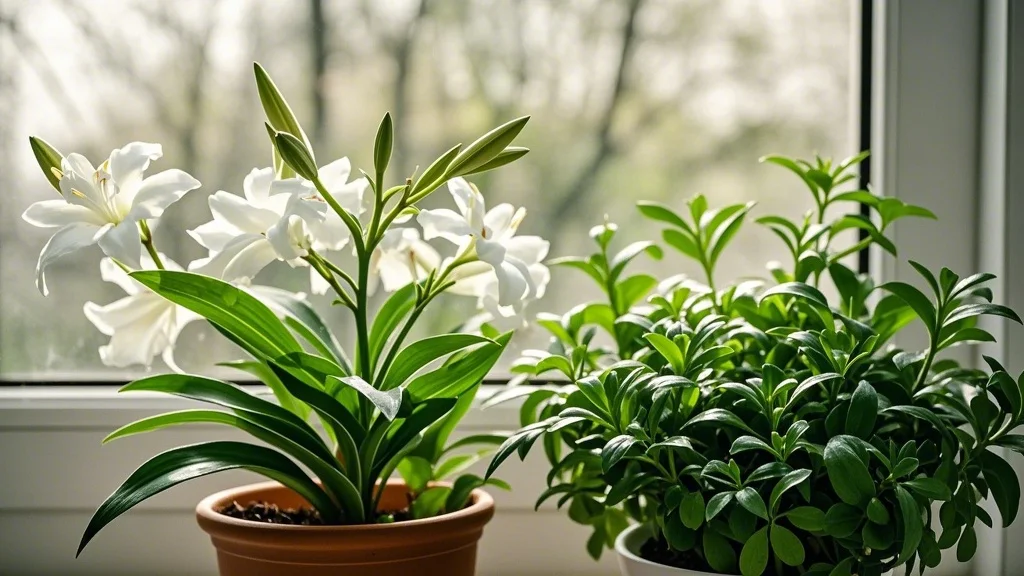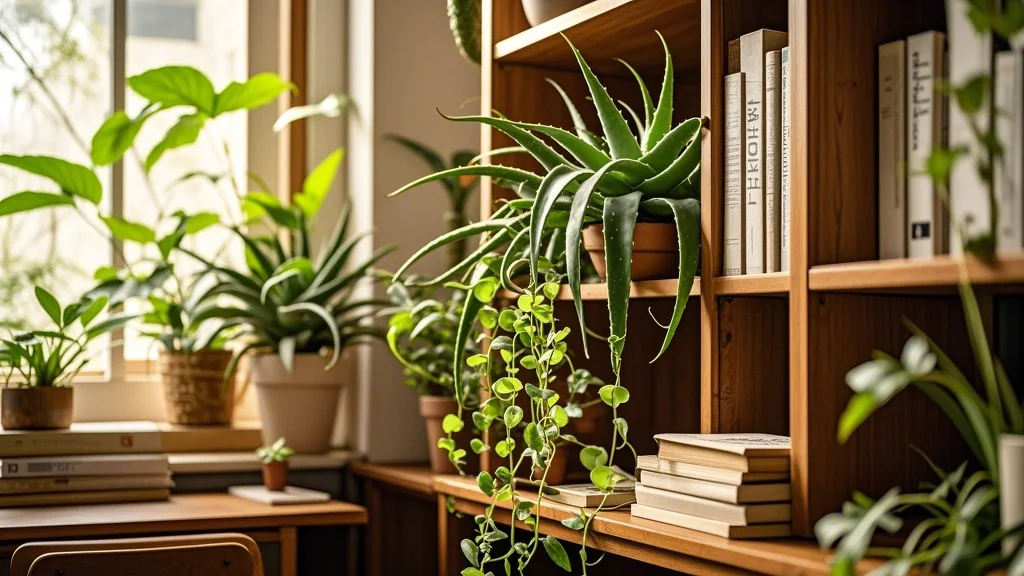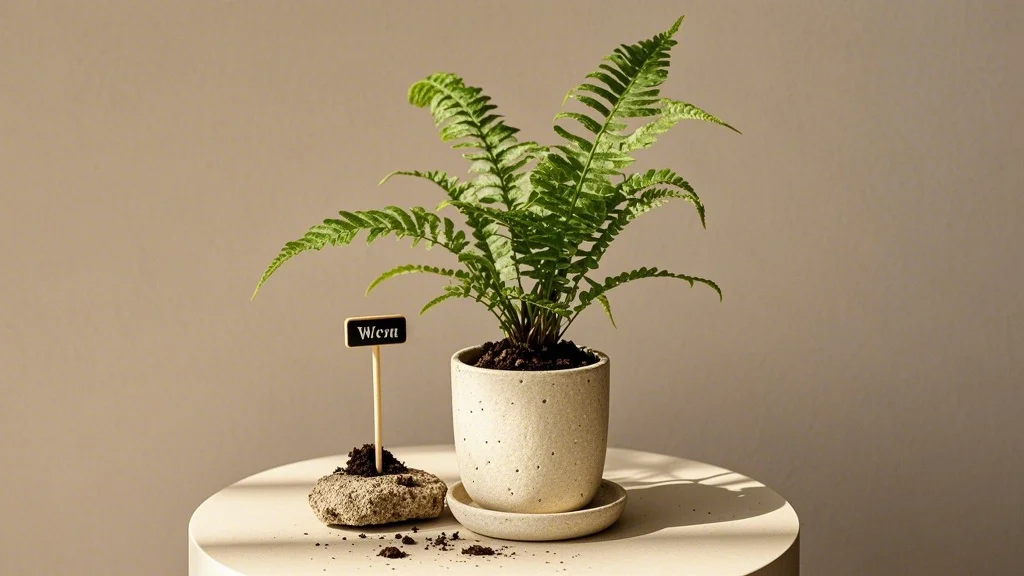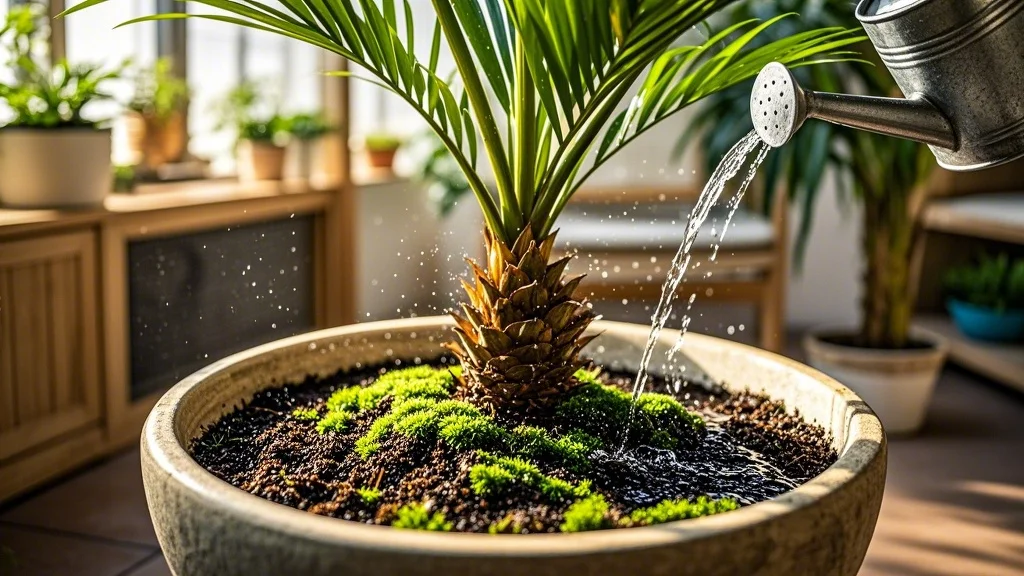In our modern urban environments, indoor air quality has become a growing concern. With the increasing awareness of indoor air pollution and its potential health impacts, many people are seeking natural solutions to purify the air in their homes and offices. Enter the NASA Clean Air Study – a groundbreaking research project that identified several houseplants capable of removing common indoor air pollutants.
This article will explore the top air-purifying plants from the NASA study, their benefits, and how to grow them successfully in your urban space. By incorporating these natural air purifiers into your home, you can create a healthier living environment while adding a touch of greenery to your indoor landscape.
Contents
- 1 The NASA Clean Air Study: A Brief Overview
- 2 Top NASA-Approved Air Purifying Plants
- 2.1 1. Peace Lily (Spathiphyllum)
- 2.2 2. Snake Plant (Sansevieria trifasciata)
- 2.3 3. Spider Plant (Chlorophytum comosum)
- 2.4 4. Golden Pothos (Epipremnum aureum)
- 2.5 5. Chrysanthemum (Chrysanthemum morifolium)
- 2.6 6. Dracaena (Various species)
- 2.7 7. Weeping Fig (Ficus benjamina)
- 2.8 8. Aloe Vera (Aloe barbadensis miller)
- 3 Maximizing Air Purification with Indoor Plants
- 4 Additional Benefits of Indoor Plants
- 5 Conclusion
The NASA Clean Air Study: A Brief Overview
In the late 1980s, NASA conducted a comprehensive study to identify plants that could effectively remove indoor air pollutants. The research aimed to find ways to purify air in sealed environments like space stations. The results, however, have far-reaching implications for improving air quality in our homes and offices.
The study focused on the ability of various plants to remove three common indoor air pollutants:
- Benzene
- Formaldehyde
- Trichloroethylene
These volatile organic compounds (VOCs) are often found in household items, building materials, and furnishings, and can have adverse health effects when present in high concentrations.
Top NASA-Approved Air Purifying Plants

1. Peace Lily (Spathiphyllum)
The Peace Lily is a versatile and low-maintenance plant that effectively removes all three main air pollutants studied by NASA.
Benefits:
- Removes benzene, formaldehyde, and trichloroethylene
- Tolerates low light conditions
- Requires minimal care
Growing Tips:
- Place in indirect light
- Keep soil consistently moist but not waterlogged
- Mist leaves regularly to increase humidity
2. Snake Plant (Sansevieria trifasciata)
Also known as Mother-in-Law’s Tongue, the Snake Plant is an excellent air purifier and one of the easiest plants to maintain.
Benefits:
- Removes formaldehyde and benzene
- Tolerates low light and irregular watering
- Releases oxygen at night, improving sleep quality
Growing Tips:
- Place in indirect light, but can tolerate some direct sun
- Allow soil to dry between waterings
- Use well-draining potting mix
3. Spider Plant (Chlorophytum comosum)
The Spider Plant is a popular choice for its air-purifying abilities and its tendency to produce offspring plants, making it easy to propagate.
Benefits:
- Removes formaldehyde and xylene
- Produces plantlets for easy propagation
- Safe for pets
Growing Tips:
- Provide bright, indirect light
- Keep soil lightly moist
- Fertilize monthly during growing season
4. Golden Pothos (Epipremnum aureum)
The Golden Pothos is a fast-growing vine that’s excellent at removing indoor air pollutants.
Benefits:
- Removes formaldehyde, benzene, and carbon monoxide
- Grows quickly and easily
- Tolerates a wide range of light conditions
Growing Tips:
- Grow in moderate to bright indirect light
- Allow soil to dry slightly between waterings
- Prune regularly to control growth and maintain shape
5. Chrysanthemum (Chrysanthemum morifolium)
While typically thought of as an outdoor plant, potted chrysanthemums can be powerful indoor air purifiers when in bloom.
Benefits:
- Removes benzene, formaldehyde, and ammonia
- Adds vibrant color to indoor spaces
- Blooms can last for several weeks
Growing Tips:
- Provide bright, indirect light
- Keep soil consistently moist
- Remove spent blooms to encourage more flowering
6. Dracaena (Various species)
Several Dracaena species, including D. marginata and D. fragrans, were found to be effective air purifiers in the NASA study.
Benefits:
- Removes benzene, formaldehyde, and trichloroethylene
- Available in various sizes and leaf patterns
- Long-lived and relatively low-maintenance
Growing Tips:
- Grow in moderate to bright indirect light
- Allow soil to dry slightly between waterings
- Prune occasionally to maintain desired shape
7. Weeping Fig (Ficus benjamina)
The Weeping Fig is a popular indoor tree that can effectively remove indoor air pollutants.
Benefits:
- Removes formaldehyde, xylene, and toluene
- Can grow into a striking indoor tree
- Available in variegated varieties for added visual interest
Growing Tips:
- Provide bright, indirect light
- Keep soil consistently moist but not waterlogged
- Avoid drafts and sudden temperature changes
8. Aloe Vera (Aloe barbadensis miller)
Besides its well-known medicinal properties, Aloe Vera is also an effective air purifier.
Benefits:
- Removes formaldehyde and benzene
- Has healing properties for minor burns and skin irritations
- Requires minimal watering
Growing Tips:
- Place in bright, indirect light
- Use well-draining soil and pots with drainage holes
- Water deeply but infrequently, allowing soil to dry between waterings
Maximizing Air Purification with Indoor Plants
While the NASA Clean Air Study demonstrated the air-purifying potential of these plants, it’s important to note that the study was conducted in controlled laboratory conditions. To maximize the air-purifying benefits in your home, consider the following tips:
- Use multiple plants: Incorporate a variety of air-purifying plants throughout your home for the best results.
- Provide adequate light: Most air-purifying plants perform best in bright, indirect light. Ensure your plants receive enough light to thrive and effectively clean the air.
- Maintain proper care: Healthy plants are more effective at purifying air. Follow the care instructions for each plant species to keep them in optimal condition.
- Clean leaves regularly: Dust can accumulate on plant leaves, reducing their ability to absorb pollutants. Gently wipe leaves with a damp cloth or mist them periodically.
- Improve overall air circulation: Use fans or open windows when possible to improve air flow and help plants distribute purified air throughout your space.
- Consider plant placement: Place air-purifying plants in areas where you spend the most time or in rooms with potential pollution sources, such as bedrooms, living rooms, or home offices.
Additional Benefits of Indoor Plants

Beyond their air-purifying capabilities, incorporating these NASA-approved plants into your home offers several other benefits:
- Improved humidity: Many indoor plants release water vapor through transpiration, which can help maintain optimal indoor humidity levels.
- Stress reduction: Studies have shown that the presence of indoor plants can reduce stress and promote a sense of well-being.
- Enhanced productivity: Research suggests that having plants in work environments can improve concentration and productivity.
- Aesthetic appeal: Indoor plants add natural beauty to your living spaces, creating a more inviting and relaxing atmosphere.
- Connection to nature: In urban environments, indoor plants provide a vital connection to nature, which can have positive effects on mental health.
Conclusion
The NASA Clean Air Study has provided valuable insights into the air-purifying capabilities of various houseplants. By incorporating these natural air purifiers into your home, you can improve indoor air quality while enjoying the many additional benefits of living with plants.
Remember that while these plants can help reduce indoor air pollutants, they should be used in conjunction with other air quality improvement measures, such as proper ventilation and regular cleaning. With the right selection and care of these NASA-approved plants, you can create a healthier, more vibrant living environment that promotes well-being and connects you with nature, even in the heart of the city.
By bringing these air-purifying plants into your urban oasis, you’re not just improving your indoor air quality – you’re cultivating a greener, healthier lifestyle that benefits both you and the environment. So why not start your own indoor clean air garden today? Your lungs (and your sense of style) will thank you.








